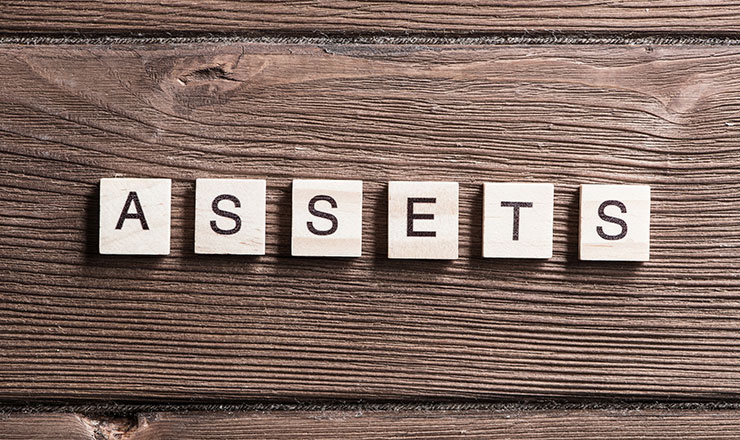What are Ghost Assets vs. Zombie Assets

Take Control of Your Assets
A personalized demo is just one click away.
Have you ever heard the terms ‘ghost asset’ or ‘zombie asset’? They may not be as terrifying as their spooky counterparts, but they can still be plenty scary for companies trying to operate efficiently and effectively.
Here’s everything you need to know about ghost assets and zombie assets, including what they are, how they impact your business, and how to remove/avoid them.
What is a Ghost Asset?
A ghost asset is an asset that you no longer have access to at your business, but which is still shown as an active and available asset on your register or in your asset management system.
Ghost assets occur when an asset is lost, stolen, destroyed, or otherwise permanently unusable, but your company fails to remove the asset from your records. Research and advisory global leader, Gartner Inc., estimates that as many as 10%-30% of assets listed on the average company’s asset register are no longer owned by that company. That means in some cases, 1 out of every 3 assets listed on a company’s books is a ghost! What’s also frightening is as many as half of all fixed asset records are either inaccurate, incomplete, or missing.
What is a Zombie Asset?
A zombie asset is sort of an inverse of a ghost asset. It represents any fixed asset that is physically on your business premises but hasn’t been properly recorded in your register or asset management system.
Zombie assets can occur for any number of reasons. One common occurrence is when an asset is given away as part of a trade-in or other deal, but the recipient never actually retrieved the asset. Because it was given away, the accounting department may have deleted it from the asset record, but it’s still present at the company’s facility.
Another form of zombie asset occurs when multiple existing assets are combined into something new— those separate existing assets may still be on the asset record, but not the newly created asset made from their parts or components.
Impact of Ghost Assets and Zombie Assets
Ghost assets are a real problem for a range of reasons. First and foremost, you may find that an employee of your business goes to access a listed asset only to find at the last minute that it doesn’t exist or is unusable. That can cause serious delays and loss of potential profits.
Many problems arise from zombie assets, too. Zombie assets can make depreciation assessment difficult, considering that it’s unclear whether they have already been depreciated or whether they should be.
Zombie assets also do not indicate whether they still have useful life remaining or whether they should simply be dispositioned. You may replace a zombie asset only to find that you had a fully functioning asset already, leading to wasted spending. Finally, any property insurance the company uses will likely only cover assets that have been registered. If a zombie asset fails, is destroyed, or is stolen, property insurance won’t cover it.
Additionally, ghost and zombie assets can lead to increased tax liability, the potential for theft without proper records to hold thieves accountable, and decreased productivity due to delays from mislabeled, unlabeled, or nonexistent assets.
How to Remove Ghost Assets and Zombie Assets
Your very first step in getting rid of ghost assets and zombie assets should be to update your asset management system. The best method is to ditch outdated systems like spreadsheets, pen and paper, and manual processes surrounding them and switch to asset management software that will allow you to automate as much of the process as possible. Reducing the chances of human error helps you stay on top of your assets, but you may need some initial manual input to go through your existing assets and determine whether any ghost or zombie assets exist.
Tagging and properly tracking assets are essential. You may need to do the initial process of labeling and creating a unique identifier for each asset in your inventory yourself, but from that point forward a quality asset tracking software system will handle the rest. Here’s a comprehensive guide that outlines the steps companies of all sizes can take to identify, eliminate and prevent ghost assets.
Benefits of Removing a Ghost Asset
Removing ghost assets will instantly provide real, measurable benefits for your business. You’ll reduce overpayment of taxes, lower your insurance premiums paid on assets you don’t have, and make your asset reporting more accurate to avoid regulatory compliance issues. You’ll also be better equipped to forecast capital expenditures accurately moving forward.
Meanwhile, your business will be more productive and efficient, helping reduce wasted time and efforts on the part of your employees.
Removing ghost assets and zombie assets will also help ensure you can keep employees and others accountable. Consider a thief's perspective— the perfect target for theft is an item that a company doesn’t even know it has. You can reduce this risk by always knowing what assets you have and where they should be at a given time— something that a robust asset tracking platform makes possible.
Avoiding Ghost Assets in the Future
If you don’t want to deal with future ghost and zombie assets, take steps today. Invest in a quality asset management platform, create a series of clear guidelines for employees for managing assets properly, and hold your teams accountable for property tagging and tracking of assets. This system should also enable you to conduct regular audits smoothly and generate detailed reports quickly.
Without these measures in place, any improvement in efficiency you get from clearing out ghost and zombie assets will be short-lived, as you’ll soon find these assets creeping back into your business like the horror movie monsters they’re named for.
Who Can You Call?
Ready to rid yourself of ghost assets and avoid the problems they cause to your company’s accounting, efficiency, and bottom line? Your best bet is to partner with an industry-leading asset management platform such as Asset Panda. They've got all the gear you need for ghost asset busting.
Asset Panda offers the best asset management tool on the market when it comes to configurability, flexibility, and efficiency. We believe that the best asset management system is one that businesses and organizations of all sizes across any industry can easily create for their own unique needs.
This cloud-based, all-in-one asset management platform is easy to adjust and can quickly be reshaped and streamlined based on your business needs. Its intuitive, user-friendly interface is easy to navigate and users benefit from a support ecosystem equipped with a knowledge base, training webinars, and a world-class support team.
Ready to give Asset Panda's asset management software a try with a free 14-day trial (no credit card required)? You’ll receive full access to user guides, video tutorials, free mobile apps, and call-in and live chat support from our friendly Asset Panda support team.
Take Control of Your Assets
A personalized demo is just one click away.
Related News & Press

Learn more from an Asset Panda expert
Get a FREE consultation with an asset tracking expert to find out how you can transform your asset tracking.
Contact our Sales Team at (888) 928-6112


